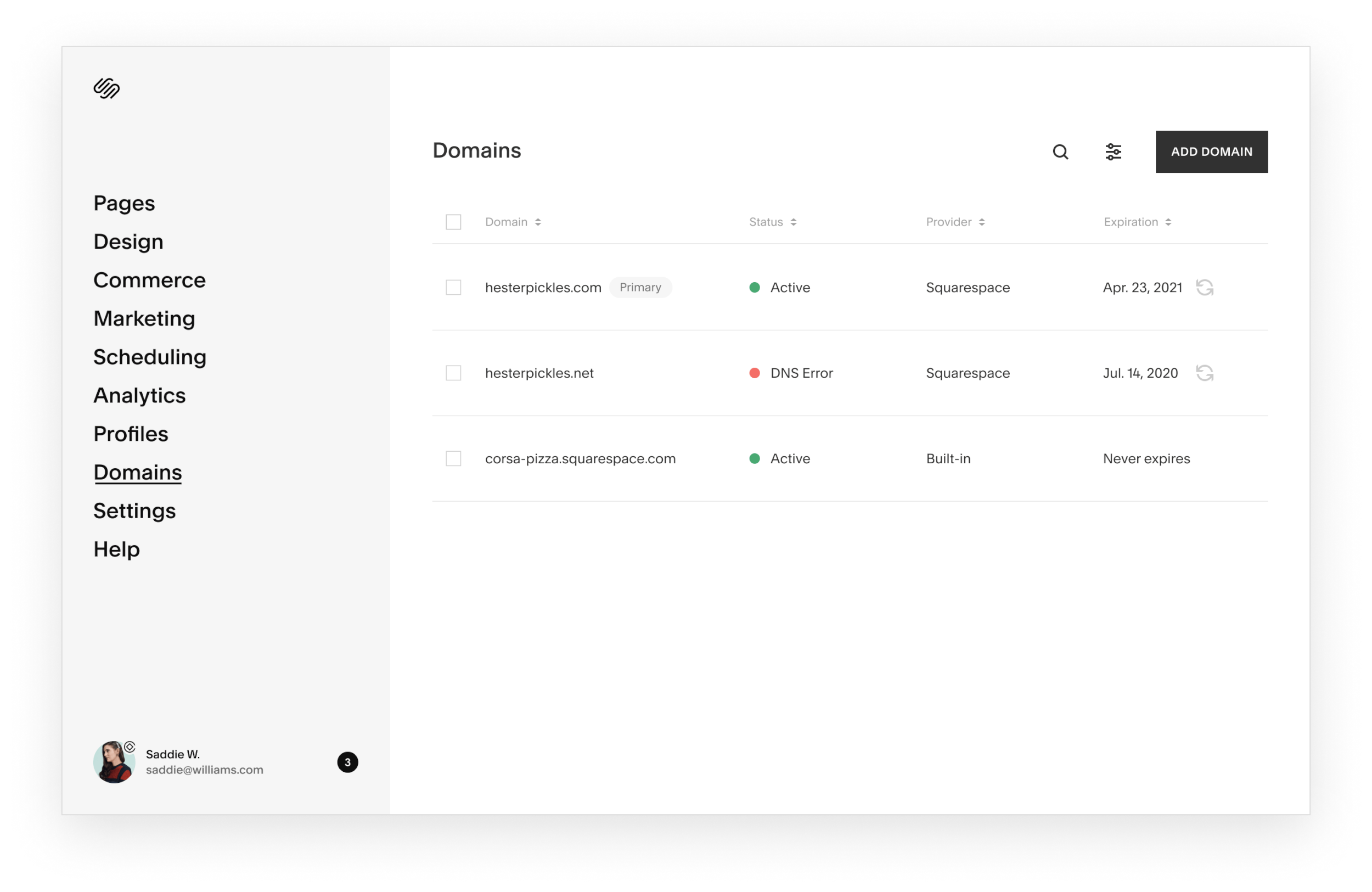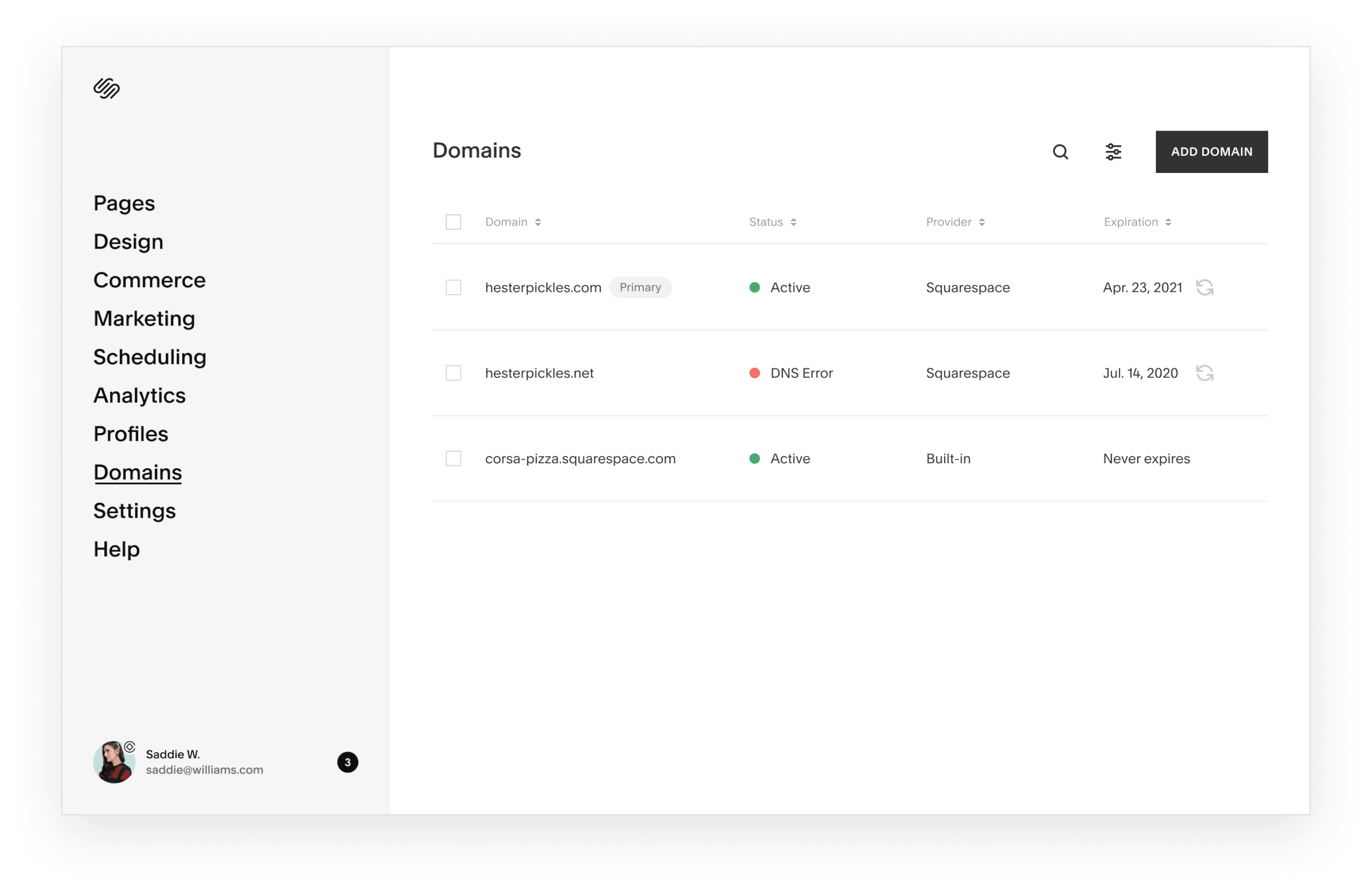A Competitive Edge for Squarespace Domains

While Squarespace is best known as a website creator, connecting and managing domains has grown to have a significant impact on the business.
But there was room to grow. Points of friction throughout the experience accounted for the majority of customer support tickets and absent functionality made it nearly impossible for users to manage larger inventories.
My team hypothesized a strategic redesign would significantly grow revenue and position us boldly within the competitive landscape. As design lead, I oversaw the execution of this effort.
Problems
Buried
Internally, Squarespace Domains is regarded as a product of its own. Architecturally, however, the offering was buried deep within the settings menu.
Sidelined
The landing experience was completely dominated by a user’s website preview which consumed significant screen real estate without bringing value to the management experience.
Lacking Features
Table stakes bulk management tools were absent from our product. Hypothetically, this accounted for only 10% of our users owning multiple domains—far below the industry average.
Process
Education
From adding name servers to defining DNS records, the complexities of domain management can even confound the experts. My process began by learning as much as possible.
Competitive Audits
Standing with the competition required a rich understanding of the landscape. Purchasing and managing domains with industry leaders allowed me to observe best and worst practices firsthand.
Mission Blueprints
The original product brief was ambitious. Wireframes were an essential in negotiating the proposed scope and developing a strategically phased plan of attack.

Prototypes
Early in the process, I flagged mobile bulk actions as a design challenge that would require extra attention. Prototypes helped me untangle the inherit complexities and surface restrictions that informed interface decisions of the larger experience.
Editorial Explorations
Domain management is often treated as a collection of settings. I wanted to explore how engaging, editorial layouts might add a richness to the product experience.

Solution
A New Home
The new Domains experiences lives directly off of the root menu. The ineffectual website preview has been replaced with a table displaying all domains with key metadata exposed. Settings appear within a sliding sidebar.

Mobile Consistency
The sidebar treatment on desktop translates seamlessly to mobile, providing a consistent experience across all devices (and a more streamlined build for our engineers).
Simply Advanced
It was critical that adding new functionality would not overwhelm the interface. Bulk actions, for instance, stay hidden until a user makes a selection.

Tailored Experience
The dashboard of a user who has not yet made a purchase is populated with recommended domains and actionable marketing messaging.

Domain Store
A user can add a new domain or connect one that they already own. Strategically, the store was designed as a full-screen modal, making it easy to reimplement in other parts of the platform.








